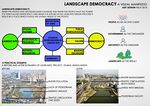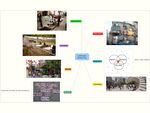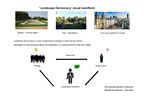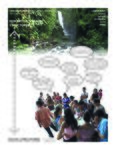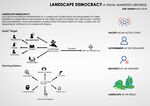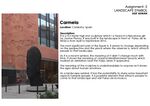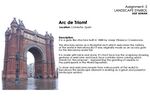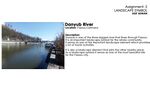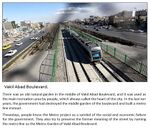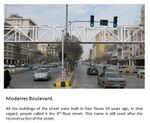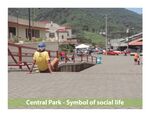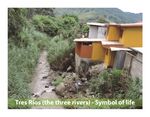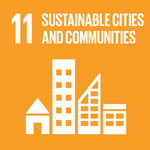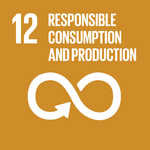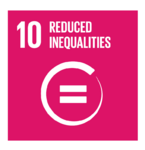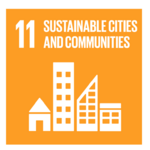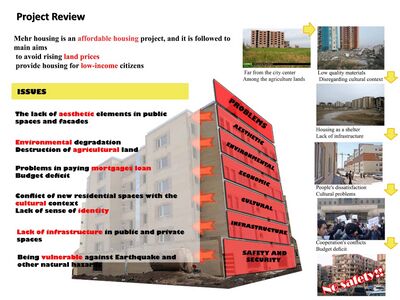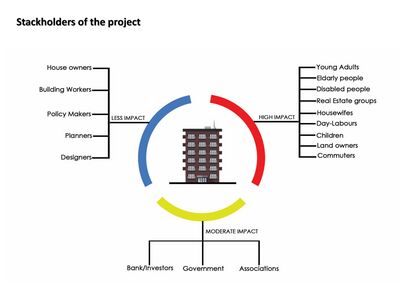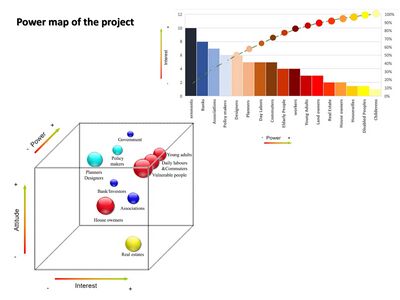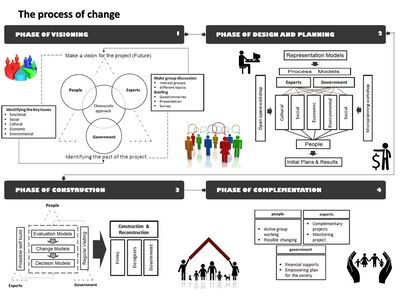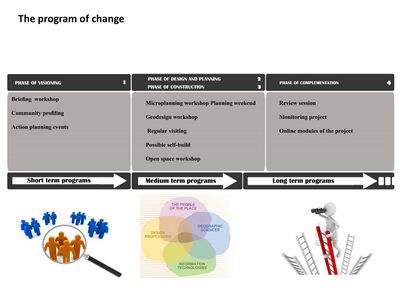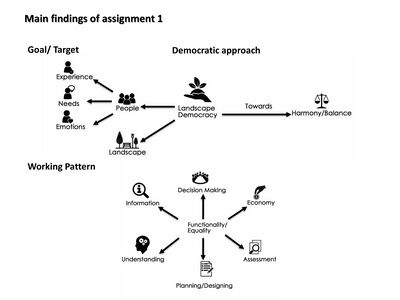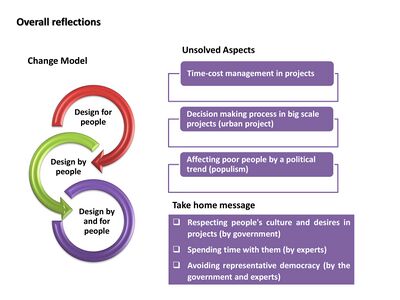LED Online Seminar 2018 - Working Group 3
--> Back to working group overview
Dear working group members. This is your group page and you will be completing the template gradually as we move through the seminar. Good luck and enjoy your collaboration!
Assignment 1 - Reading and Synthesizing Core Terminology
- You can read more details about this assignment here
- Readings are accessible via the resources page
Step 1: Your Landscape Democracy Manifestoes
Step 2: Define your readings
- Please add your readings selection for the terminology exercise before April 18:
A: Landscape and Democracy
The Aarhus Convention on Access to Information, Public Participation in Decision-making and Access to Justice in Environmental Matters (Sirine Jebali)
The European Landscape Convention (Hamid Gohari)
Lynch, Kevin. (1960): The Image of the City (Asif Adnan)
B: Concepts of Participation
Sanoff, Henry (2014): Multiple Views of Participatory Design, Focus (Hamid Gohari)
Day, Christopher (2002): Consensus Design (Asif Adnan)
C: Community and Identity
Hester, Randolph (2006): Design for Ecological Democracy, The MIT Press (Sirine Jebali)
Welk Von Mossner, Alexa (2014): Cinematic Landscapes, In: Topos, No. 88, 2014.(Hamid Gohari)
Nassauer, Joan Iverson (1995): Culture and Changing Landscape Structure, Landscape Ecology, vol. 10 no. 4.(Asif Adnan)
D: Designing
Hester, Randolph: Life, Liberty and the Pursuit of Sustainable Happiness (Sirine Jebali)
E: Communicating a Vision
Steps 3 and 4: Concepts Selection and definition
- Each group member selects three relevant concepts derived from his/her readings and synthesize them/publish them on the wiki by May 9, 2018
- Group members reflect within their groups and define their chosen concepts into a shared definition to be posted on the wiki by June 6, 2018.
- Other group members will be able to comment on the definitions until June 12, 2018
- Each group will also report on their process to come to a set of shared definitions of key landscape democracy concepts on the wiki documentation until June 20, 2018
Concepts and definitions
Author 1: Asif Adnan
- Imageability: Urban space is not just composed of its physical characteristics but equally by representations in mental images. People and their activities are as important as the static physical parts of a city thus creating its imageability. (The Image of the City: Kevin Lynch)
- Combining users and Professionals to get the whole picture: Users see the near picture of a place through their day to day life experience while avoiding the overview whereas, for the professionals, it works in the other way around. Combining these two classes, this leads to a consensus design approach which can bring a positive change in both materialistic and spiritual aspect of a place. (Consensus Design: Christopher Day)
- Cultural principle through experimenting landscape at human scale: Culture and landscape are internally connected. Studying landscape at a human scale leads to the exploration of deeper cultural principles which is essential for a greater perception of nature. (Culture and changing landscape structure: Joan Iverson Nassauer)
Author 2: Hamid Gohari
- A framework for safeguarding landscape in Europe: Protecting landscape as a common heritage and wishing enjoyable public landscape would achieve through close cooperation among the European countries. (The European Landscape Convention).
- Local Participatory, socio-spatial capital: Preparing a participatory at the local level would increase the level of social capital and also assure the responsive projects (Sanoff, Henry (2014): Multiple Views of Participatory Design).
- Cinematoscape, basic principles of film story: The landscape of a film, which known as the setting, should have all elements that help to narrate the film story. In the other words, all the formal, functional, and meaning of the real (or fiction) landscape must be present in the film – which makes a film impressive one (Welk Von Mossner, Alexa (2014): Cinematic Landscapes, In: Topos, No. 88, 2014).
Author 3: ...
- ......
- .......
- .......
Author 4: ...
- ......
- .......
- .......
Step 5: Reflection
The horizon of Landscape Design: Asif Adnan
Designing Landscape is a broader term that encompasses all the aspects related to landscape. A landscape reflects the overall image of an area where it's physical state, the inhabitants, and their actions are equally crucial parts. Making it responsive, the inclusion of both the planners and users are important. In local scale, this process may include all the groups with the professionals. On a much broader scale, this process can be an outcome of cooperation and coordination of different nations. It is also related to heritage and in turn, reflects the culture which can be perceived at a human level through the eyes of the user or through a virtual screen.
The Meaningful Landscape (Hamid Gohari) People are the main users of the public spaces and a successful public space is the result of the presence of all the social groups in society. In this regard, meaning as the most important aspect of public spaces and landscape is directly affected by them and Cultures, human behavior patterns, and mental image have formed this aspect of the public spaces. Therefore, Experts and professional sectors extremely need to consider them to have a positive effect on culture and make an imageable landscape for people.
Step 6: Revised manifestoes
- please look again at your initial manifestoes and update them with any new aspects/prespectives you have taken up during this seminar
Assignment 2 - Your Landscape Symbols
- You can read more details about this assignment here
Landscape Symbols Author 1: Asif Adnan
It is a 4.5-meter high iron sculpture which i a head of a Bercelona girl by Jaume Plensa. It was built in the landscape in front of Palau de la Música from April to September 2016.The most significant part of the figure is, it seems to change depending on the perspective and the place where the observer is, which attracts people to that landscape. As it is a recent symbol, the meaning of it didn’t change much with time. It shows the meaning of classical Mediterranean beauty which marked an exhibition near Palau when it appeared. The meaning of the sculpture is understandable to anyone as it shows the signs about human emotions.As a landscape symbol, it has the potentiality to share some important aspects towards people. It is powerful element that attracts people to come to that landscape and visit Palau de la musica.
It is a gate like structure built in 1888 by Josep Vilaseca i Casanovas.The structure serves as a triumphal arch which welcomes the nations of the world in Bercelona.But it was originally made as an access gate for the Bercelona world fair. It is made of brick and stone. It’s front face has the sculptures showing gestures of welcome and back face contains stone carving which stands for ‘Recompose’, representing the granting of awards to the participants in the World Exposition.To show and welcome people from various parts of the world to Barcelona this landscape element is working as a great and powerful landscape symbol.
Danyub is one of the three biggest river that flows through Passau. It is an important landscape symbol for the whole community. It serves as one of the important landscape element which provides a lot of tourist activities. It is also a landscape element that joins the other nearby areas.As a landscape symbol, it serves as one of the most beautiful site for the Passau city.
Landscape Symbols Author 2: Hamid Gohari
There was an old natural garden in the middle of Vakil Abad Boulevard, and it was used as the main recreation area by people, which always called the heart of the city. In the last ten years, the government had destroyed the middle garden of the boulevard and built a metro line instead.Thesedays, people know the Metro project as a symbol of the social and economic failure for the government. They also try to preserve the former meaning of the street by naming the metro line as the Metro-Garden of Vakil Abad Boulevard.
For people, this street is like a symbol of the identity and history of the city (Mashhad city). All the buildings of the street were built in four floors 50 years ago, in that regard, people called it the 4th-floor street. This name is still used after the reconstruction of the street. The physical and functional changes of the street, with the addition of new buildings around it, have only led to a change in the two aspects of the landscape (physical and functional), but the meaning aspect of the Landscape, despite all the changes, has remained constant.
This utility box is known as a political symbol in urban landscape in Iran. What makes this box as a symbol is protesting against compulsory hijab by a girl who stood on the box. But after a moment police hade a violent interference with her. Now, the box knows as a symbol among the people. Once again it was proven that the right to freedom of opinion is the right to hold opinions without interference", and public spaces as the main part of the landscape are the most suitable places to show it.
Landscape Symbols Auther 3: ...
The Danube River is the main landmark (watermark) in the city of Budapest, It gives a unique characteristic and identity to the city. It splits the city in two sides: Buda and Pest, but also connect them through the several bridges, as for example the “Chain Bridge”, the oldest and most iconic bridge in the city. The Danube river bank acts like the most democratic symbol in the city, first of all because for everybody is possible to reach it from several points, 24 hours per day, 365 days per year, is possible to have visual contact with it from many spots as well, also close from it, occurs most of the main activities in the city and are located most representative buildings of the city (Buda Castle, Fisherman Bastion, Parliament, Great Market, Corvinus University, etc), and the visual and esthetic value that the river gives is immeasurable, because it works also as a mirror of the city, without it, the landscape will lose the sense and the beauty that you can see now.
Memento Park is an open-air museum, dedicated to monumental statues and sculpted plaques from Hungary's Communist period (1949–1989). There are statues of Lenin, Marx, and Engels, as well as several Hungarian Communist leaders. The park was designed by Hungarian architect Ákos Eleőd, who won the competition announced by the Budapest General Assembly. A quote by the architect on the project: "This park is about dictatorship. And at the same time, because it can be talked about, described, built, this park is about democracy. After all, only democracy is able to give the opportunity to let us think freely about dictatorship.“ The Park has a strong symbol of what the Hungarians want to leave behind; the communist era, that’s why they decided to place this park in the borders of the city and is hard to reach area. Paradoxically the statue on the photo was designed and represented the freedom of the people and proletariat, now the meaning change completely and also its symbolic value.
Szabadság híd (in English: Liberty Bridge), connects Buda and Pest across the River Danube. This particular bridge acts like not just a functional elements o infrastructure, it became symbol of unity and gathering. The bridge has the particularity that it is the unique bridge in the city that is not only used to cross from one side to another, but also that people along the years has appropriated it as a place of meeting and recreation, especially in summer, when it is common to find locals and tourists sitting in their structure talking, drinking something and simply watching the sunset over the Danube. This effect has been so representative that the local government has decided in recent years during summer time, to close the bridge to the traffic of cars and leave it exclusively for the tram and pedestrians, and on very frequent occasions, use the bridge as a site of concerts, parties and cultural activities. In other words, its symbolic value for the city goes beyond joining two separate points.
Landscape Symbols Author 4: Sirine Jebali
Sidi Bou Said is located in the Gulf of Tunis and it is the first conservation area in the world.The village has a calm, relaxed atmosphere and outstanding views of Mediterranean Sea.Everything is well-kept with white washed walls, blue doors and windows with traditional motifs.Behind these doors, famous artists such as Paul Klee and Louis Moillet, musicians, important families and government officials have lived and worked.Well, these doors are symbol of charm, beauty, history and culture that Sidi Bou Said holds.
Ennejma Ezzahra is a palace in northern Tunisia, built by Baron Rodolphe d'Erlanger between 1909 and 1921 as his home there. It was occupied and looted by the German military during World War II. Now, it is a fascinating museum for Arabic and Mediterranean music.This palace is symbol of Tunisian musical heritage where musicians, and choral groups from around the world perform on a regular basis and considered among the jewels of architecture in Tunisia.
The medina is the historic heart of Tunis, has been listed as a Unesco World Heritage since 1979.It is a labyrinthine ancient city surrounded by a continuous wall.The particularity of the medina of Tunis reamins in its stability;no changes has been made on its structure through the years.This photo represents the souks of medina,the most of theme were built from XIII th century. Covered or uncovered,Souks are enormous; they offer an infinity of colors, flavors and scents.These souks are symbol of the old tunisian architecture.
Landscape Symbols Author 5: Luis Solano
This case study is a good example of NO democratic landscape. Why?Central Park has historically been a meeting place, meeting, leisure, social gathering, mass events, fairs, a lot of social activity and a striking and characteristic vegetation that gave comfort to the space. However, for 2009 its remodeling is announced in a design process that did not have an open to consultation and public participation. The new space has a much more open and permeable concept, freeing large areas for activities on platforms, and although it allows an incredible view of the mountains of La Carpintera, it reduces the activities of small areas liked by users. Although the space has had a good flexibility and functionality for the different activities that occur in it, the fact of not having the support of the community during its conception broke all the sentimental links and attachments with the space, generating a disagreement with a considerable part of the community. Fortunately, the constant use of space has not been lost thanks to the numerous activities that surround it, even today the symbolism as a social space of encounter is maintained.
My town gets its name literally by a very particular water condition, it is crossed by three important rivers, from here its name Tres Ríos (in English, literally Three Rivers). They are the Chiquito, Cruz and Tiribí rivers. The latter continues through the rest of the city through the southern sector. These water systems have an incalculable value, because in their springs drinking water purification systems are used for consumption in my town and sectors of other large cities such as Desamparados, Curridabat and San Pedro. Unfortunately this is a forgotten landscape, often remembered only during the heavy rainy periods, when nature reminds us of its power. Many rivers increase their channels considerably or leave them causing damage and emergencies. This is a good topic of reflection, to think about how our city is planned, what participation and role the community living in its surroundings takes and the possibility of studying successful cases in Latin America that have incorporated water bodies into urban dynamics.
These mountains with the rivers have an enormous importance in our town at a historical, identity and natural level. Almost every inhabitant of the town has climbed once in his life to the top. Its value as a symbol has lasted over time through many generations, but it has also suffered the pressure of urban growth and deforestation zones. They are part of a larger biological correodor that connects several mountain ranges to the east and west. It was declared a Protected Area in 1976, helping to preserve its fragile ecosystems in an area of 2,396 hectares. and it protects one of the few remanates of the Humid Premontane Forest of the Metropolitan Area of Costa Rica. For those of us who live in the town, these mountains have an enormous sentimental value and sensitivity for nature, and we know of their current fragility. For visitors it is easy to understand the importance of these mountains that remain green throughout the year, their scale and proximity to the center of the town call attention and remind us every day the value of nature linked to the city. Various organizations of the community have been carrying out important educational work regarding the importance and value of this natural system for the people and the country, as well as reforestation.
Assignment 3 - Role Play on Landscape Democracy "movers and shakers"
- You can read more details about this assignment here
Assignment 4 - Your Landscape Democracy Challenge
- You can read more details about this assignment here
- Each group member will specify a landscape democracy challenge in his/her environment
- Each Landscape Democracy Challenge should be linked to two or three of UN's 17 sustainable development Goals
Landscape Democracy Challenge 1: Asif Adnan
- Effective or not: Flyovers in Chittagong, Bangladesh
Reason: Solving traffic congestion in Chittagong district flyover projects are done. This type of project was also not a part for the DAP of Ctg. Despite the criticism by the Forum for Planned Chittagong (FPC) regarding the "effectiveness" of the constructed flyovers, constructions are still ongoing. This affects the surrounding landscape and generated the concern among people weather these flyovers are necessary or not. To see how these projects affect the landscape as well as people on a various scale (social, economic and other) this issue is taken into account.
Feasibility Issues: In some cases, Flyovers are done on the roads which are not suitable for them. From the analysis, it is observed that some of the flyovers failed to achieve their initial goal. An example can be seen as the Bahaddarhat MA Mannan Flyover in Chittagong city which remains mostly idle as locals refrain from using it due to unplanned design, whereas hundreds of vehicles ply the adjacent road. Due to its linear design, it lacked the vision for the neighborhood adding more traffic congestion in that area as it works as a physical barrier in the small roads of that region and poses a new challenge over a problem for the community.
Economic and Social Issues: More than 3500 crores Tk is spent to build these flyovers and expressways which is a great loss of resources according to the architects, urban planners, and the professionals. Authorities claim people are being benefited, but residents, town planners, and transport unions say flyovers bring no effective results in mitigating traffic congestion.
Actors: Chittagong Port Authority( CPA) and Chittagong Development Authority (CDA) are working as the main actors behind the construction of these flyovers and opposing this there are residents, urban dwellers, Transport unions and the Forum for planned Chittagong (FPC) which is a platform of Architects, Urban planners, and the professionals.
Goal 9: Building resilient infrastructure, promote sustainable industrialization and foster innovation This challenge is also directly linked to UN's sustainable development goal no 9 as this aims to build infrastructures that are resilient and promotes innovation in the field of transport, irrigation, energy and information and communication technology.
Your references:
- The Daily Star/Article: Necessity of Ctg city flyovers in question
- Bangladesh: Road Maintenance and Improvement Project
Landscape Democracy Challenge 2 - Hamid Gohari
- Whose housing? (Mehr Housing Projects - Iran)
Why this project? Mehr housing is a government project for low-income people which started in 2007. To avoid rising land prices and provide housing for low-income citizens, the government decided to build about 1,500,000 affordable residential units in lease lands in urban areas. After about 11 years of the project, many problems have appeared, especially in spatial and social aspects, which make it one the worst national projects in the century. This project not only has not achieved its main goals, also make some serious conflicts between society and government.
Safety (Issue1): One the most important issues is the "safety and build quality" in the projects. Many of these homes were produced cheaply in huge quantities without serious attention being paid to build quality, safety standards and proper seismic design. The reality is that this scheme was a major drainage of public funds into the pockets of government cronies. Little-to-no concern was paid to quality of the build and to the fate of the people who were to use the houses. (The figure compares Mehr housing and private housing conditions after the earthquake).
Cultural issues(Issue2): Considering cultural conditions and different tastes of applicants are of the important factors of housing projects which had not seen in Mehr Housing Project. On the other hand, Housing needs should be planned by studying the cultural context of each area. Many people are not interested in apartment life, especially in small cities. They prefer to live in single houses which have more privacy than the apartments with more public and semi-public spaces. For that reason, after over 10 years, many units have been remained vacant. (The figure shows the current situation of the most of projects).
Your references:
- Bazargan, M.( 2015) Assessment of Mehr Housing Project as an Example of Housing for Low-Income People in Iran, IOSR, PP 70-74
- https://www.theguardian.com/world/iran-blog/2014/jan/30/irans-economy-struggles-to-support-ahmadinejads-ill-conceived-housing-vision
Landscape Democracy Challenge 3
- Give a title to your challenge
- Yourname challenge 1.jpg
caption: why did you select this case?
- Yourname challenge 2.jpg
caption: what is the issue/conflict (1)
- Yourname challenge 3.jpg
caption: what is the issue/conflict (2)
- Yourname challenge 4.jpg
caption: who are the actors?
- Yourname challenge 5.jpg
caption: UN's Sustainable Development Goal?
- Yourname challenge 6.jpg
caption: UN's Sustainable Development Goal?
Your references:
- ...
- ...
Landscape Democracy Challenge 4
- Give a title to your challenge
- Yourname challenge 1.jpg
caption: why did you select this case?
- Yourname challenge 2.jpg
caption: what is the issue/conflict (1)
- Yourname challenge 3.jpg
caption: what is the issue/conflict (2)
- Yourname challenge 4.jpg
caption: who are the actors?
- Yourname challenge 5.jpg
caption: UN's Sustainable Development Goal?
- Yourname challenge 6.jpg
caption: UN's Sustainable Development Goal?
Your references:
- ...
- ...
Landscape Democracy Challenge 5
- Give a title to your challenge
- Yourname challenge 1.jpg
caption: why did you select this case?
- Yourname challenge 2.jpg
caption: what is the issue/conflict (1)
- Yourname challenge 3.jpg
caption: what is the issue/conflict (2)
- Yourname challenge 4.jpg
caption: who are the actors?
- Yourname challenge 5.jpg
caption: UN's Sustainable Development Goal?
- Yourname challenge 6.jpg
caption: UN's Sustainable Development Goal?
Your references:
- ...
- ...
Assignment 5 - Your Democratic Change Process
- You can read more details about this assignment here
- After documenting and reflecting on your challenges you will continue jointly with one of these challenges and design a democratic change process
Your Democratic Change Process
- Add Title
Reflection
- ....
- ....
Conclusion
- For big scale govt. projects, cultural aspects & the demands of the people should be taken into account,
- For experts in the field, spending more time in problem-solving and with the people may lead to a plausible solution.
- Representative democracy should be avoided, transparency should be included.
Your references
- Community Planning handbook
- ...
- ...
